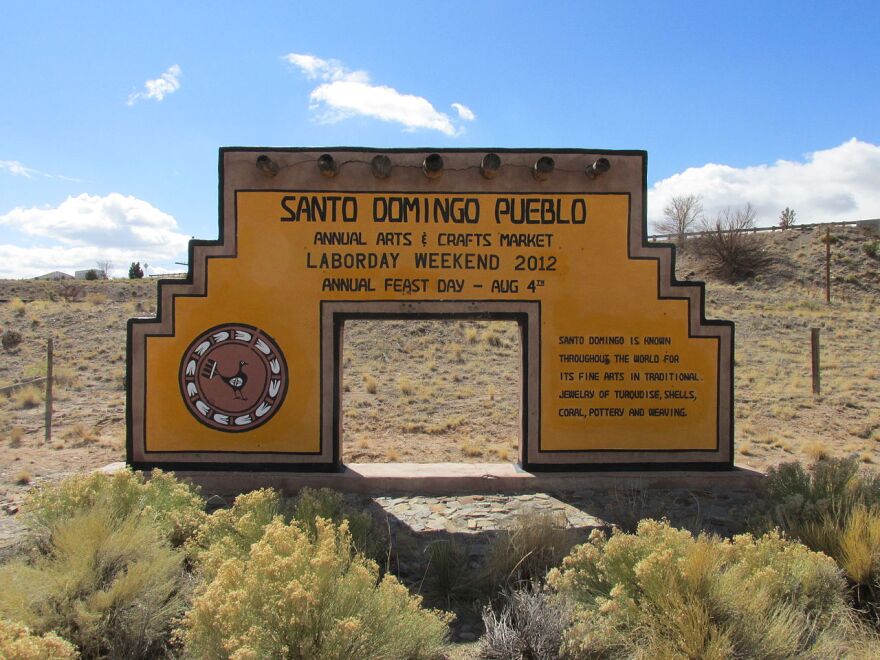Tribal communities in New Mexico have been hit especially hard by the coronavirus, due to deep social and economic disparities resulting from colonization. Now, the pandemic threatens to make those disparities worse by hindering the 2020 Census count that will affect how much federal funding goes to tribes over the next decade. Shaun Griswold, urban Indigenous reporter with New Mexico In Depth, reports tribes are playing catch-up after public health shutdowns along with geography and other factors have led to low Census response rates so far. He told KUNM’s Hannah Colton that an undercount could mean a difference of millions of federal dollars going to basics like housing and education.
Interview transcript:
SHAUN GRISWOLD: The vast majority of school districts in New Mexico have Title I schools, especially ones with Native Americans. We’re talking McKinley County Schools, Albuquerque Public Schools, San Juan County Schools... So it's very important for the Census to understand how many of these kids are living in these areas so that they can identify school needs and programs for these students. It also plays into health care, not only directed through the Indian Health Services, but also in urban health clinics. More than 70 percent of Native Americans do not live on a tribal land. They live in urban settings, like in Albuquerque or Gallup. So the urban count is very important, especially when it comes to health, because it directs a lot of those services that will be important for them to use if they don’t particularly have an IHS clinic near them. There are new health clinics that have been developed out of some of this federal grant money.
KUNM: The form asks Native Americans to list their tribal affiliation. Can you explain why that detail is important and what people need to know about how to respond to that?
GRISWOLD: The race question on the Census is important for Native Americans who have an affiliation with a tribe, and they must identify their tribe based off of the Federal Register. Now, for an example, the Federal Register lists the Zuni Pueblo as the "Zuni Tribe." Now on the street signs, in all state documents, you know, people from Zuni identify as Zuni Pueblo, but if they write in "Zuni Pueblo" on their Census, it's likely not going to be counted properly.

Now, there's a whole lengthy discussion as to how the race question was developed, and there are some concerns from advocates that this would be confusing. And it has already shown that people who identify with a tribe identify in multiple ways. There’s people that identify with the traditional names, so for Zuni it’d be A:shiwi. If you look into the Santa Domingo Pueblo, for instance, like you drive from Albuquerque to Santa Fe on I-25 and the exit sign is for Santo Domingo Pueblo. The Santa Domingo Pueblo, on the Federal Register, is listed as "Kewa Pueblo." And even among some of the public relations in tribal communications, [they] have been directing their citizens how to properly identify. The Navajo Nation, for instance, they communicated with their tribal members to write in Navajo Nation if they're identifying as a Navajo member: not Diné, not Navajo, but to write in "Navajo Nation."
KUNM: What kinds of response rates are you seeing in the tribal communities in New Mexico to the census right now?
They range anywhere from. I've saw recently, the Navajo Nation had a self-response rate of 3 percent, and then, you know, upwards to 45 percent. Now, in New Mexico, the state average is around 48 percent. Right now, the national average self-response rate is about 61 percent. So New Mexico overall is behind on the national average.
The tribal community count, though, is definitely affected by COVID. Tribal communities are sovereign nations so they can determine when they want to open up their borders for anybody who's going to work with the Census to continue to drop off these packets. To my knowledge right now, each tribe in New Mexico has given a date to the Census for when they want their packets to be delivered to tribal community doors, but not every tribe has started that that process. Now, people can call, they can go online, but the Census and tribal leaders are really urging people to wait until they get that packet on their door with the specific code and ID number that's geo-tagged to their location. Because, you have to remember, tribal communities, many of them don't have actual physical mailing addresses, or even physical streets listed. And so, the Census and tribal leaders really are encouraging people to wait until they get that packet on their door to fill out their Census. Because if they fill it out by calling the number or going online, like anybody else can do, they're likely going to have to have a Census worker go back to them, or they may even have to fill out the Census again, just so that they can have that accurate count for the location of where their home is.
So, the historical barriers are obvious here. And with COVID happening, you saw the inequalities that that COVID created, and with the Census count it’s no different. And hopefully, you know, people in these tribal communities not only get their packets, but they also fill it out in order for them to receive the federal resources that they deserve and they should have.
******
Read Griswold's full story on Census response among Native Americans in New Mexico here.
The deadline to respond to the Census is the end of October.
******
Support for KUNM’s public health coverage comes from the W.K. Kellogg Foundation and from listeners like you.






